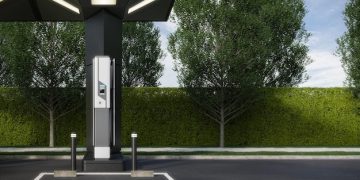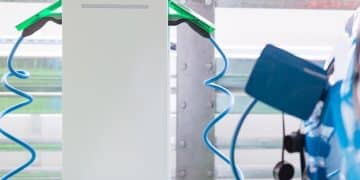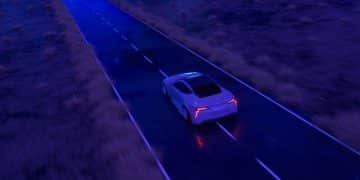Electric Vehicle Charging Standards: CCS, CHAdeMO, and Tesla NACS Explained
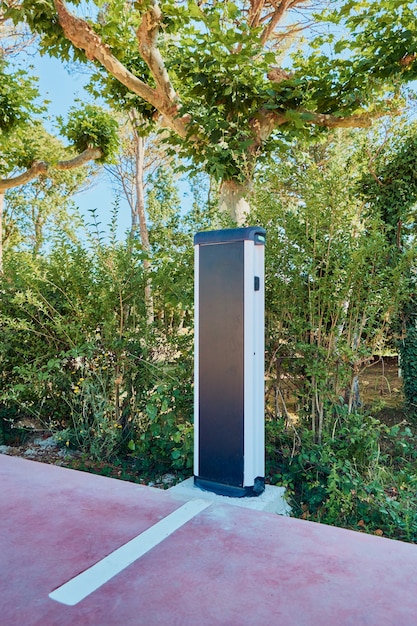
Understanding electric vehicle (EV) charging standards is crucial for EV owners, covering CCS, CHAdeMO, and Tesla’s NACS, each offering distinct charging capabilities and compatibility across different vehicle models and charging networks.
Navigating the world of electric vehicles (EVs) can be exciting, but also a bit confusing, especially when it comes to charging. Understanding Electric Vehicle Charging Standards: CCS vs. CHAdeMO vs. Tesla’s NACS is essential for EV owners and prospective buyers alike. Different standards exist, each with its own set of connectors, charging speeds, and compatibility considerations. Let’s demystify these standards and help you make informed decisions about your EV charging needs.
Understanding EV Charging Levels
Before diving into specific charging standards, it’s important to understand the different levels of EV charging. These levels dictate the voltage and amperage used, directly impacting charging speed.
Understanding these levels helps you choose the right charging option for your needs, whether you’re at home or on the road.
Level 1 Charging
Level 1 charging is the simplest and slowest method. It uses a standard 120V AC outlet, the same one you use for everyday appliances. This is typically the slowest method of charging.
Level 2 Charging
Level 2 charging utilizes a 240V AC outlet, similar to those used for dryers or ovens. Many public charging stations and home charging units are Level 2, offering a significantly faster charging experience compared to Level 1.
- Faster charging speeds compared to Level 1.
- Requires a dedicated 240V circuit.
- Commonly found at public charging stations and homes with installed charging units.
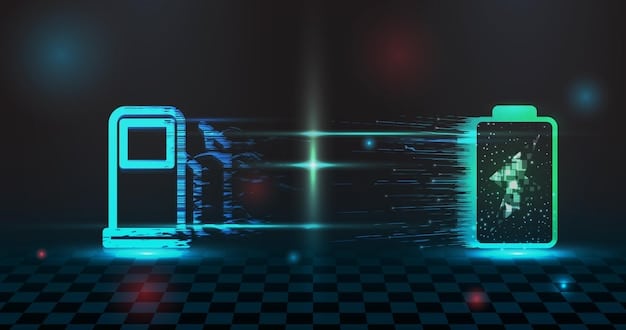
DC Fast Charging
DC Fast Charging (also known as Level 3 charging) delivers high-voltage DC (Direct Current) power directly to the EV battery, bypassing the onboard charger. It uses significantly higher power levels to provide the fastest charging speeds available.
- Significantly faster than Level 1 and Level 2.
- Requires specialized charging equipment.
- Typically found at public charging stations along highways.
- Uses standards like CCS and CHAdeMO (more on these later).
In conclusion, EV charging levels are an important concept to understand when owning an electric vehicle. They help in selecting the right charging option at home or on the go, and understanding their function can save time and frustration when charging.
The CCS (Combined Charging System) Standard
The Combined Charging System (CCS) is a widely adopted charging standard that allows for both AC and DC charging using a single port. It combines the functionality of Level 2 charging with DC Fast Charging capabilities.
The CCS standard has gained widespread acceptance among automakers. It offers versatility and convenience by integrating AC and DC charging into a single port.
CCS Connector Types
The CCS standard uses two primary connector types: CCS Type 1 (CCS1) and CCS Type 2 (CCS2). CCS1 is commonly used in North America, while CCS2 is prevalent in Europe.
Key Features of CCS
CCS offers several notable features, including:
- Combined Charging: Supports both AC (Level 1 and Level 2) and DC Fast Charging.
- High Power Output: Capable of delivering high power levels for rapid charging.
- Communication Protocol: Uses the SAE J1772 standard for AC charging and the DIN 70121 / ISO 15118 standard for DC Fast Charging.
The CCS standard’s combined charging capabilities and high power output make it a popular choice for EV manufacturers and charging network operators looking to make charging easier and more convenient.
The CHAdeMO Standard
CHAdeMO is a DC Fast Charging standard primarily used in Japan and by some automakers elsewhere. While its popularity has waned in recent years, it’s still found on some older EV models and charging stations.
CHAdeMO was an early leader in DC Fast Charging. However, it’s gradually being replaced by the CCS standard in many regions.
Key Features of CHAdeMO
CHAdeMO has several unique features, including:
- DC Fast Charging Only: CHAdeMO is solely a DC Fast Charging standard and does not support AC charging.
- Distinct Connector: It utilizes a unique connector that differs from those used by CCS or other standards.
- Communication Protocol: Employs its own proprietary communication protocol for charging control and data exchange.
CHAdeMO vs. CCS
Here’s a quick comparison between CHAdeMO and CCS:
While CHAdeMO was an early adopter of DC Fast Charging, its limited capabilities and lack of AC charging support have contributed to its decline compared to CCS.
In summary, CHAdeMO is a DC fast charging standard that has gradually become less used as CCS becomes the dominant standard among EV manufacturers.
Tesla’s NACS (North American Charging Standard)
Tesla’s NACS, formerly known as the Tesla connector, is the charging standard used by Tesla vehicles in North America. However, it’s quickly becoming the predominant standard because other manufacturers are adapting it into their lineup.
Tesla’s NACS connector is compact and versatile, offering both AC and DC charging capabilities. Originally exclusive to Tesla vehicles, it’s now gaining broader acceptance.
Key Features of NACS
NACS boasts several appealing features:
- Combined Charging: NACS supports both AC (Level 1 and Level 2) and DC Fast Charging.
- Compact Design: The connector is smaller and lighter than CCS connectors.
- High Power Output: NACS can deliver high power levels for fast charging.
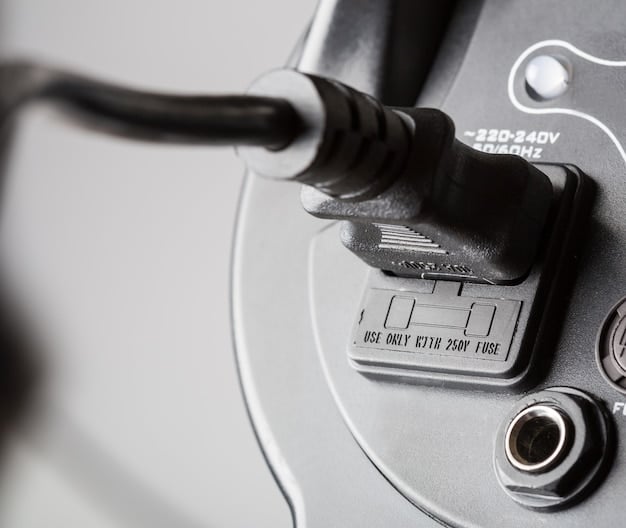
NACS Adoption by Other Automakers
Several major automakers have announced plans to adopt NACS in their future EV models. This move is expected to consolidate the charging landscape in North America, providing greater charging convenience for EV owners.
NACS is becoming an increasingly important charging standard as the world transitions to EVs. Its adoption by other automakers signifies that the standard may soon replace the CCS as the standard charging method.
The Future of EV Charging Standards
The EV charging landscape will likely continue to evolve with the emergence of new technologies and standards. The integration of bidirectional charging, wireless charging, and higher power charging capabilities are all areas of active development.
Standardization efforts are ongoing to create a more seamless and interoperable charging ecosystem. Collaboration between automakers, charging network operators, and regulatory bodies is crucial.
Bidirectional Charging
Bidirectional charging, also known as vehicle-to-grid (V2G) technology, allows EVs to not only draw power from the grid but also send power back to it. This capability can help stabilize the grid, reduce energy costs, and provide backup power during outages.
Wireless Charging
Wireless charging offers a convenient way to charge EVs without the need for cables. While still in its early stages, wireless charging technology is gradually improving in efficiency and power transfer capabilities.
The current direction that EV charging is moving is exciting. With technologies like bidirectional and wireless charging, EVs are becoming more convenient and versatile.
Choosing the Right Charging Standard
When purchasing an EV or using public charging stations, it’s important to consider the charging standard it supports. Compatibility between the vehicle and charging equipment is essential for a seamless charging experience.
The right choice depends on the vehicle model, local charging infrastructure, and desired charging speed.
Vehicle Compatibility
Check the EV’s specifications to determine which charging standards it supports. Some EVs may only support one standard, while others may be compatible with multiple standards.
Public Charging Infrastructure
Consider the availability of charging stations that support the required standard in your area. Use charging network apps or websites to locate compatible charging stations.
Charging Speed Requirements
Evaluate charging speed needs and choose a charging standard that meets those requirements. DC Fast Charging is ideal for long trips, while Level 2 charging may suffice for daily commuting.
In summary, the right charging standard depends on you and your vehicle’s needs. It ultimately boils down to knowing which standards your EV supports as well as what charging resources are present in your location.
| Key Point | Brief Description |
|---|---|
| ⚡ EV Charging Levels | Levels 1, 2, and DC Fast Charging offer varying charging speeds. |
| 🔌 CCS Standard | Combines AC and DC charging; widely adopted. |
| 🚗 CHAdeMO Standard | DC Fast Charging only; decreasing in popularity. |
| 🔋 Tesla’s NACS | Compact, versatile; being adopted by other manufacturers. |
FAQ
▼
CCS1 (Combined Charging System Type 1) is primarily used in North America, while CCS2 (Combined Charging System Type 2) is commonly found in Europe. They have slightly different connector designs but offer similar charging functionalities.
▼
No, CHAdeMO and CCS are not compatible. They use different connector types and communication protocols, requiring separate charging ports or adapters (if available) to support both standards.
▼
While several automakers are adopting NACS, it’s not guaranteed that all EVs will transition. The charging landscape is evolving, and other standards or solutions may emerge.
▼
Use mobile apps or websites from charging network operators (e.g., Electrify America, ChargePoint, Tesla). These platforms allow you to filter charging stations based on connector type, charging speed, and availability.
▼
Contact the charging network operator immediately to report the issue. Use their app or website to find alternative charging stations nearby to minimize inconvenience.
Conclusion
Understanding EV charging standards is crucial for anyone involved with electric vehicles. As the industry continues to grow and evolve, keeping up-to-date with the latest developments in charging technology will ensure a seamless and enjoyable EV ownership experience. With CCS, CHAdeMO, and Tesla’s NACS each playing a significant role in the charging landscape, knowing the differences and compatibility factors can empower EV users to make informed decisions and maximize their charging options.
